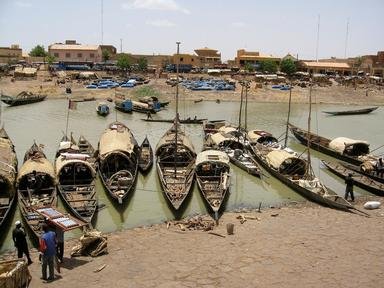Quiz Answer Key and Fun Facts
1. As the Kingdom of Mali was rising to power, which earlier African kingdom was incorporated into the new empire?
2. What does the name "Mali" mean?
3. The Kingdom of Mali was ruled by an emperor. What was his title?
4. Although there is no denying that the city of Timbuktu was one of the largest and most important in the Kingdom of Mali, it was not the empire's capital. Which of the following cities is believed to have served as the capital of the Mali Empire?
5. Who is considered to be the founder of the Mali Empire?
6. There is a famous story about the Emperor of Mali traveling to Saudi Arabia. What was the purpose of the journey?
7. What effect did the King of Mali's journey to Saudi Arabia have on the area he visited?
8. When the King of Mali returned from Saudi Arabia, he brought back Arab scholars with him. Some of these scholars were architects, who created the Sudano-Sahelian style of architecture and gave it a Mali flavor. Which of the following buildings is an example of this style of architecture?
9. At the peak of its power in 1300, the Kingdom of Mali was one of the largest in area that the world had ever known. In fact, there was only one contemporary empire that was larger. Which one?
10. Eventually the Kingdom of Mali became part of the Songhai Empire. The decline of the empire was due in part by an invasion by which nomadic group, who still lives in modern-day Mali?
Source: Author
ponycargirl
This quiz was reviewed by FunTrivia editor
gtho4 before going online.
Any errors found in FunTrivia content are routinely corrected through our feedback system.
